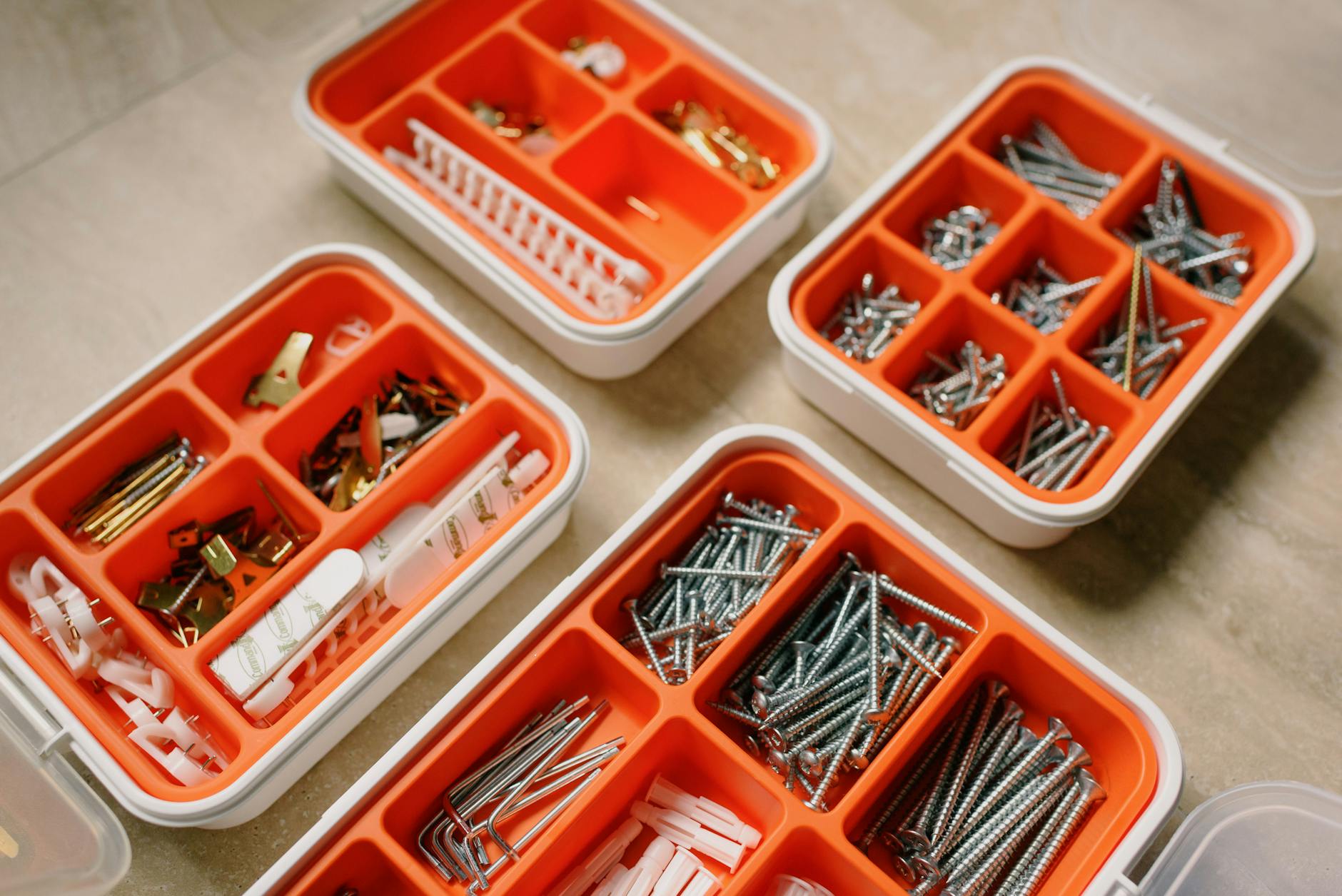How to Screenshot on Windows: 5 Simple Methods
Everyone uses screenshots. They're a quick, easy way to capture information on your screen. Whether it's a funny meme, a complicated graph, or a key piece of information, grabbing that image and saving it for later is a basic skill. But, did you know there are several ways to take a screenshot on a Windows computer? Here, we'll explore five different methods to capture your screen, so you always have the right tools at your fingertips.
How to Screenshot on Windows: 5 Different Ways
Method 1: Using the Print Screen Key
Capturing screenshots on Windows is an essential skill that can come in handy for a variety of reasons. Whether you want to capture an error message, save an image from the web, or share something interesting with your friends, there are multiple methods available to help you achieve that. In this article, we will explore five different ways to take screenshots on Windows. Let's get started with Method 1!
Step 1: Locate the Print Screen Key
The Print Screen key, often abbreviated as "PrtSc" or "PrtScn," is located on the upper-right side of your keyboard, typically above the "Insert" key. It might also be labeled as "Print Screen" or "PrtSc SysRq." This key plays a crucial role in capturing your screen contents.
Step 2: Capture the Entire Screen
To capture the entire screen, simply press the Print Screen key once. You won't see any visual confirmation that the screenshot has been taken, but don't worry. The captured image is now stored in your clipboard, waiting to be pasted into an image editing program or document.
Step 3: Save or Edit the Screenshot
To save the screenshot as an image file, open an image editing program such as Paint or Photoshop, and paste the captured image from the clipboard by pressing "Ctrl + V" or selecting "Paste" from the program's menu. Once pasted, you can save the screenshot in your desired format, such as JPEG, PNG, or GIF.

(Photo by Tima Miroshnichenko)
Remember, this method captures the entire screen, including any open windows or taskbars. If you only want to capture a specific window or a portion of the screen, stay tuned for the other methods we'll be covering in this article.
Stay tuned for the following sections, where we'll explore four more ways to capture screenshots on Windows. Each method offers its own unique advantages and can be more suitable for specific scenarios.
Method 2: Using the Snipping Tool
Capturing screenshots on Windows can be a breeze when you have the right tools at your disposal. One of the built-in tools that Windows offers is the Snipping Tool. It's a simple yet effective way to take screenshots and save them for later use. In this section, we'll walk you through the steps to use the Snipping Tool to capture your screen.
Step 1: Open the Snipping Tool
To get started, you'll need to open the Snipping Tool. You can do this by clicking on the "Start" button on your taskbar, typing "Snipping Tool" in the search bar, and selecting the tool from the search results. Alternatively, you can press the "Windows" key on your keyboard, type "Snipping Tool," and hit "Enter."
Step 2: Choose your Snip Type
Once the Snipping Tool is open, you'll see a small window with various options. From here, you can choose the type of snip you want to take. The available options include:
- Free-form Snip: This option allows you to draw a shape around the area you want to capture.
- Rectangular Snip: This option lets you capture a rectangular portion of your screen.
- Window Snip: With this option, you can select a specific window to capture.
- Full-screen Snip: This option captures the entire screen.
Choose the snip type that suits your needs by clicking on the corresponding button in the Snipping Tool window.
Step 3: Capture and Save the Snip
After selecting the snip type, your screen will freeze, and a crosshair cursor will appear. Click and drag the cursor to select the area you want to capture. Once you release the mouse button, the captured snip will be displayed in the Snipping Tool window.
To save the snip, click on the "File" menu in the Snipping Tool and select "Save As." Choose a location on your computer to save the snip and give it a descriptive file name. You can also select the file format for the snip, such as JPEG or PNG, before saving it.

(Photo by Anna Shvets)
With these simple steps, you can quickly capture and save screenshots using the Snipping Tool on Windows. Whether you want to capture a specific portion of your screen or the entire screen, the Snipping Tool provides a convenient way to get the job done. Give it a try and see how easy it is to capture screenshots on Windows!
Method 3: Using the Snipping Tool
The Snipping Tool is a built-in screen capture tool in Windows that provides more advanced options for taking screenshots. This method is particularly useful when you need to select a specific portion of the screen or capture a screenshot with annotations. Let's explore how to use the Snipping Tool in just two simple steps.
Step 1: Open the Snipping Tool
To open the Snipping Tool, follow these steps:
- Press the Windows key on your keyboard to open the Start menu.
- Type "Snipping Tool" in the search bar.
- Click on the Snipping Tool app that appears in the search results.
Step 2: Capture a Screenshot
Once you have the Snipping Tool open, you can capture a screenshot by following these instructions:
- Click on the New button in the Snipping Tool window.
- Your screen will fade, and the cursor will turn into a crosshair.
- Click and drag the crosshair to select the area you want to capture.
- Release the mouse button to take the screenshot.
Now that you know how to open and use the Snipping Tool, you can easily capture screenshots with precision and flexibility. Whether you need to highlight a specific section of a webpage or add annotations to your screenshot, the Snipping Tool has got you covered.

(Photo by Skylar Kang)
Remember, there are many ways to capture screenshots on Windows, and the Snipping Tool is just one of them. In the next section, we will explore another method that might better suit your needs. Stay tuned!
Method 4: Using the Snipping Tool
If you're looking for a more advanced way to capture screenshots on your Windows computer, the Snipping Tool is the perfect tool for you. This built-in feature provides additional options and flexibility compared to the basic methods we've covered so far. Let's dive in and learn how to use it!
Step 1: Open the Snipping Tool
To begin, open the Snipping Tool by either searching for it in the Windows search bar or locating it in the Start Menu. Once you find it, click on the icon to launch the tool.
Step 2: Select your snip type
The Snipping Tool offers four different snip types: Free-form snip, Rectangular snip, Window snip, and Full-screen snip. Each snip type allows you to capture different areas of your screen, depending on your needs.
To choose a snip type, click on the "New" button in the Snipping Tool window, and then select the desired snip type from the drop-down menu.
Step 3: Capture and save your snip
After selecting your preferred snip type, you can now capture the desired area of your screen. Simply click and drag your cursor to select the portion you want to capture. Once you release the mouse button, the snipped area will be displayed in the Snipping Tool window.
To save the snip, click on the "File" menu in the Snipping Tool window, and then select "Save As" to choose a location on your computer to save the screenshot.
That's it! You've successfully used the Snipping Tool to capture a screenshot on your Windows computer. With its various snip types and customization options, the Snipping Tool is a powerful tool for capturing screenshots with precision and ease.

(Photo by Ksenia Chernaya)
Method 5: Using the Snipping Tool
The Snipping Tool is a built-in screenshot tool that comes with Windows. It offers more advanced features compared to the previous methods we discussed. Let's dive into how you can use this tool to capture screenshots effortlessly.
Step 1: Open the Snipping Tool
To begin, open the Start menu and search for "Snipping Tool." Once you find it, click on the application to launch it.
Step 2: Choose the Snip Type
After opening the Snipping Tool, you'll see a small window with various snip options. These options include Free-form Snip, Rectangular Snip, Window Snip, and Full-screen Snip. Select the snip type that suits your screenshot needs.
Step 3: Capture and Save the Screenshot
Once you've chosen the snip type, your screen will freeze, allowing you to select the area you want to capture. Click and drag your cursor to capture the desired region. Once you release the cursor, the snipped screenshot will appear in the Snipping Tool window. To save the screenshot, click on the "Save" icon in the toolbar and choose the location where you want to save the image.

(Photo by George Milton)
Voila! You've successfully captured and saved a screenshot using the Snipping Tool. This method offers flexibility and precision, allowing you to capture specific parts of your screen effortlessly.
Now that you're familiar with five different ways to take screenshots on Windows, you have a wealth of options to choose from depending on your preferences and requirements. Whether you prefer the simplicity of the Print Screen key, the versatility of Snip & Sketch, or the advanced features of the Snipping Tool, capturing screenshots on Windows has never been easier.
Remember, practice makes perfect. Take some time to explore these methods and find the one that works best for you. Soon enough, you'll be a pro at capturing screenshots on Windows, making it a breeze to document and share important information with others.
Stay tuned for more useful tips and tricks to enhance your productivity and make the most out of your Windows experience. Happy screenshotting!
Conclusion
In conclusion, capturing screenshots on Windows is a useful skill that can enhance your productivity and communication. By utilizing the five different methods outlined in this blog post, you can easily capture and share screenshots with others.
Remember, the Print Screen key is your go-to option for capturing the entire screen, while the Alt + Print Screen combination allows you to capture only the active window. If you prefer more flexibility, the Snipping Tool provides the ability to capture specific areas of your screen.
For those who wish to use built-in shortcuts, Windows + Shift + S opens the Snip & Sketch tool, allowing you to capture parts of your screen directly. Alternatively, the Windows + PrtScn combination instantly saves a screenshot to your Pictures folder.
With these five methods at your disposal, you can effortlessly capture and utilize screenshots on Windows to enhance your work, troubleshoot technical issues, or simply share information with others. Mastering these techniques will undoubtedly boost your productivity and make your digital tasks more efficient.
So, go ahead and start exploring the world of screenshotting on Windows. Happy capturing!
Please note that the instructions provided in this blog post are based on the Windows operating system. The specific steps may vary slightly depending on the version of Windows you are using.
Comments
Post a Comment